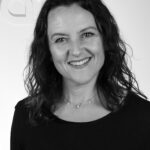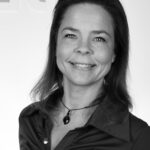Contact
Sophie Jensen
Project Manager
sophie.jensen@matis.is
Undesirable substances in seafood products - results from the Icelandic marine monitoring activities in the year 2012
This report summarizes the results of monitoring for undesirable substances in seafood, fishmeal and fish oil for feed since 2012. The EU maximum levels for dioxins and dioxin-like PCBs (DL-PCBs) in food and feed were recently lowered and maximum levels were set for the first time. set for "non-dioxin-like" PCBs (NDL-PCBs). The new maximum values are used in this report to assess how Icelandic seafood meets EU requirements. The monitoring began in 2003 with the help of the then Ministry of Fisheries, the current Ministry of Industry and Innovation, and has now been carried out for ten consecutive years. The project builds a knowledge base on the amount of undesirable substances in economically important species and marine products, it is defined as a long-term project where monitoring and review are constantly necessary. In 2012, emphasis was placed on gathering information on the organic compounds PFC and inorganic trace elements in edible seafood, but also in fishmeal and fish oil for feed. In general, the results obtained in 2012 were in line with previous results from 2003 to 2011. The results showed that Icelandic seafood contains insignificant amounts of persistent organic pollutants such as dioxins, PCBs, pesticides and PBDEs. This was the second year that PFCs have been detected in Icelandic seafood and perfluorooctane sulfon amide (PFOSA) was the only PFC substance that exceeded the detection limit, other PFC substances were not measured. The results from 2012 showed that despite the change in maximum levels for dioxins, DL-PCBs and NDL-PCBs (EU Regulation No. 1259/2011), all samples of seafood for human consumption are below the EU maximum levels for persistent organic pollutants and heavy metals. The concentration of reference PCBs (marker PCBs) turned out to be minimal in the edible part of the fish, compared to the new maximum EU values. The results also showed that the concentration of heavy metals, such as cadmium (Cd), lead (Pb) and mercury (Hg) in Icelandic seafood was always below the EU maximum values. In March 2012, EU Regulation No. 277/2012 entered into force, lowering maximum levels for dioxins and DL-PCBs in animal feed, but also setting maximum levels for NDL-PCBs. Despite this change, all samples of fishmeal and fish oil for feed were measured below maximum levels, with the exception of one blue whiting meal sample containing toxafen above EU maximum levels.
This report summarizes the results obtained in 2012 for the screening of various undesirable substances in the edible part of marine catches, fish meal and fish oil for feed. The newly established maximum levels for dioxins, dioxin ‐ like PCB and non dioxin ‐ like PCB in foodstuffs and animal feed are used to evaluate how Icelandic seafood products measure up to EC limits currently in effect. The surveillance program began in 2003 and has now been carried out for ten consecutive years. The project fills in gaps of knowledge regarding the level of undesirable substances in economically important marine catches for Icelandic export. It is considered to be a long ‐ term project where extension and revision are constantly necessary. In the year 2012 emphasis was placed on gathering information on the organic compounds PFCs and inorganic trace elements in the edible part of marine catches as well as in the fish meal and fish oil for feed. Generally, the results obtained in 2012 are in agreement with previous results from the years 2003 to 2011. The results show that the Icelandic seafood products contain negligible amounts of persistent organic pollutants (POPs) such as dioxins, dioxin like PCBs, pesticides and PBDEs. This is the second time PFCs are analyzed in Icelandic seafood and fish products and the results show that the main PFC compound, perfluorooctane sulfone amide (PFOSA) was the only congener detected. The results obtained in the year 2012 reveal that despite the recent change by the EC in maximum levels for dioxins, dioxin ‐ like PCB and non dioxin ‐ like PCB in foodstuffs, all samples of seafood for human consumption were below EC maximum levels for POPs and heavy metals. Furthermore, the concentration of marker PCBs was found to be low in the edible part of fish muscle, compared to the maximum limits set by the EU (Commission Regulation 1259/2011). The results showed that the concentrations of heavy metals, eg cadmium (Cd), lead (Pb) and mercury (Hg) in Icelandic seafood products was always well below the maximum limits set by EU. In March 2012 Commission Regulation No 277/2012, regarding maximum levels for dioxins and PCBs in animal feed came into effect and after the implementation of this regulation maximum levels are now also set for non dioxin ‐ like PCBs. Despite of this change all samples of fish meal and fish oil for feed measured were below the EC maximum limits for feed components of marine origin except for one blue whiting meal sample that exceeds the maximum limits for toxaphene.






